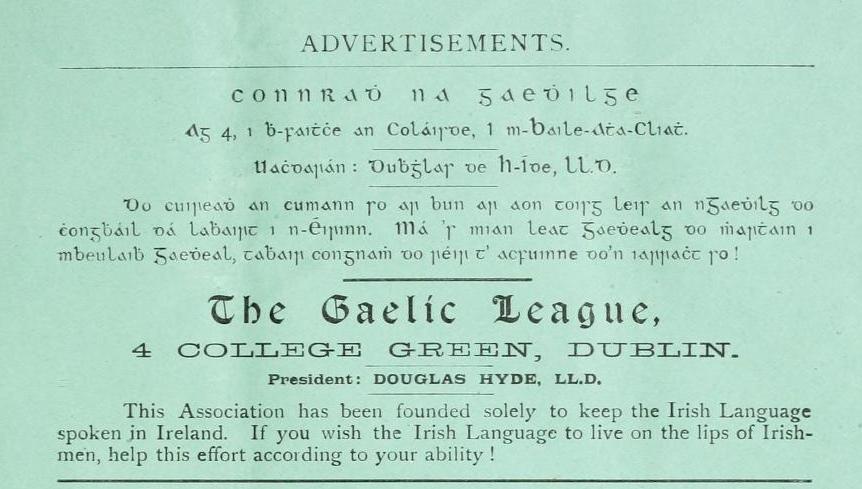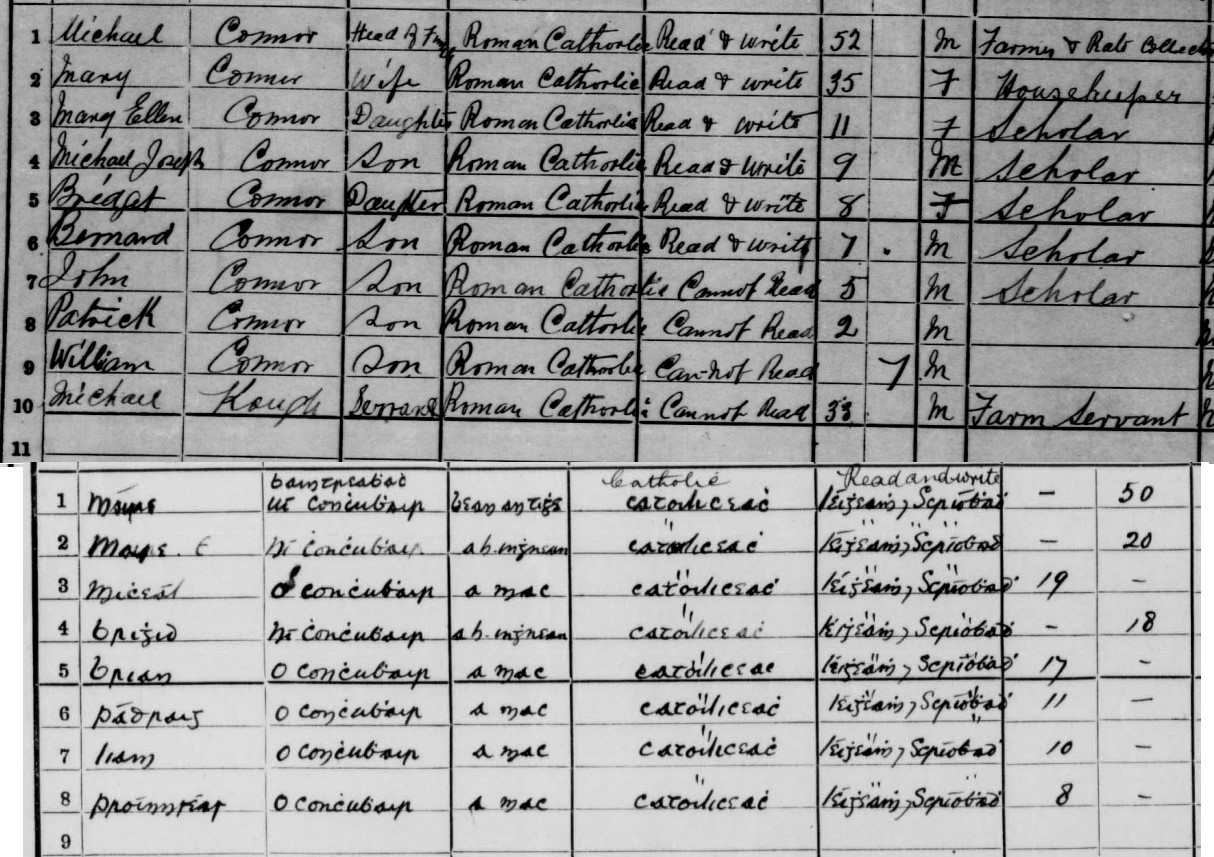
I have written before about the online 1901 and 1911 Censuses, mostly because it’s a source I’m very familiar with, having spent 9 months correcting errors in transcriptions. But it is a topic worth revisiting because it is a record set that still regularly presents obstacles when dealing with research for clients and the general public.
Often people may have identified the family in one census but not the other. This can happen for a variety of reasons; spelling variants, mis-transcriptions, inconsistencies in information (e.g. age recorded), etc. These sorts of problems are relatively common in many sources and can usually be easily overcome.
However, there are also more awkward anomalies; surname and forename reversed, individuals recorded by initials (e.g. hospital entries, R.I.C. members), or the subject of this post, those written in the Irish language.
Entries written in the Irish language can be particularly difficult to identify if you aren’t certain about where the family lived. If you do know the townland, it is always possible to use the ‘Browse’ function, go to the townland and see if you can pick them out that way.
Where the browse function isn’t an option, or fails to yield a result, you’ll need to familiarise yourself with the Irish spellings of the relevant forenames and surname. But be warned, much like their English counterparts, there are numerous spelling variations in both forenames and surnames.
For example, using a wildcard (s*m*s) to try and negate some of the variant spellings of the name Seamus (James) returns the following; Seama(i)s, Seamu(i)s, Seumis, Seumus, Seomas, Shamus, Sheamus, Shemus, etc., and my personal favourite, Shoemus!

Example: The same O’Connor (O’Conchubhair) family on the 1901 (English) and 1911 (Irish) Censuses
By Stephen Peirce
